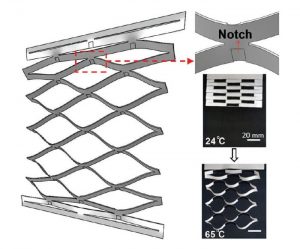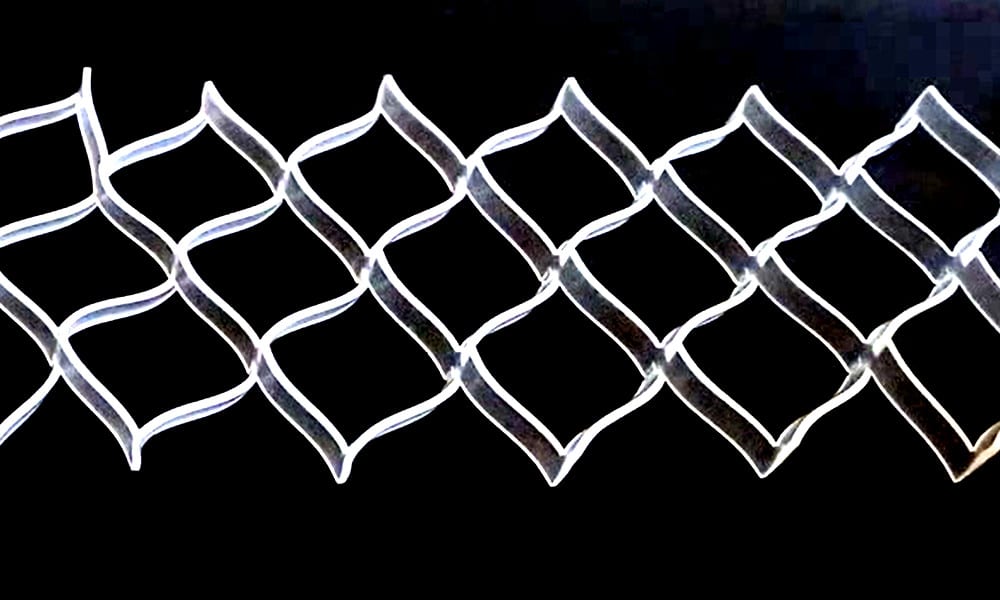Imagine a building – your home, your office, or your favorite restaurant – where the walls, floor, and windows respond to local changes of solar radiance, lighting, and temperature. A building that is energy-saving on demand: that reflects heat or light simply by changing its physical structure.
Kirigami structures are reconfigurable metamaterials that have the ability to dynamically control their geometrical structure in response to an external stimulus. Now, researchers from the USA report in Advanced Materials the next generation of kirigami structures known as kiri-kirigami structures.
Kirigami structures are composed of thin films of, for example, poly(dimethylsiloxane) (PDMS), that are cut in defined patterns to allow rigid rotation – bending and twisting – of the film out-of-plane, creating open pore spaces as the film expands. However, conventional kirigami structures are currently limited by their uncontrollable tilting orientations that are dependent on the direction of the applied force. This restricts optimal light or solar heat reflection or transmission in the films.
Alternatively, kiri-kirigami structures have additional shallow patterned cuts that are made on both sides of the kirigami film to permit controllable uniform rotation, independent of the stretching conditions. By fine-tuning the cut pattern, the local tilting orientations can be optimized. In addition, thermally shrinkable polyolefin tapes have been attached to the cut patterned notches to demonstrate functional, thermally spontaneous responsive materials (see image). The thermal tape actuates structural tilting, which creates a self-folding bilayer that collectively opens and closes the kiri-kirigami structure through temperature changes (shrinking as temperature is increased, allowing the pores to open).

Notably, the introduction of notches is proven to release stress concentration in kiri-kirigami materials with respect to preceding kirigami structures, making them much stronger and resistant to an applied force. Therefore, the force applied to rotate thick films does not result in films buckling (as was shown in kirigami materials). Ultimately, this discovery could permit thicker and stronger reconfigurable building materials for use in adaptive architecture and energy-saving buildings.

















